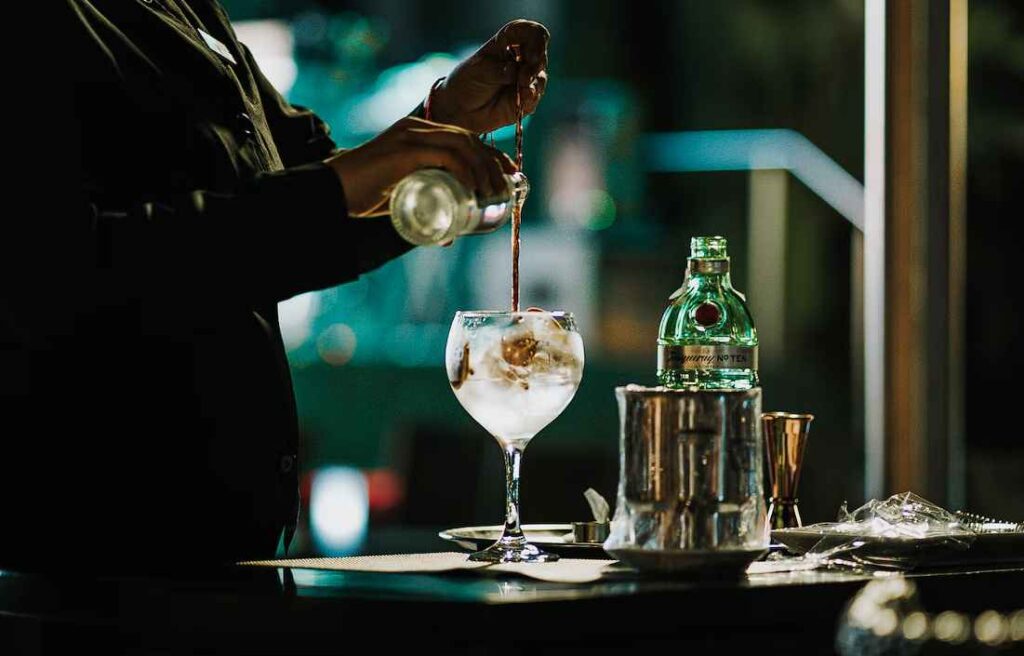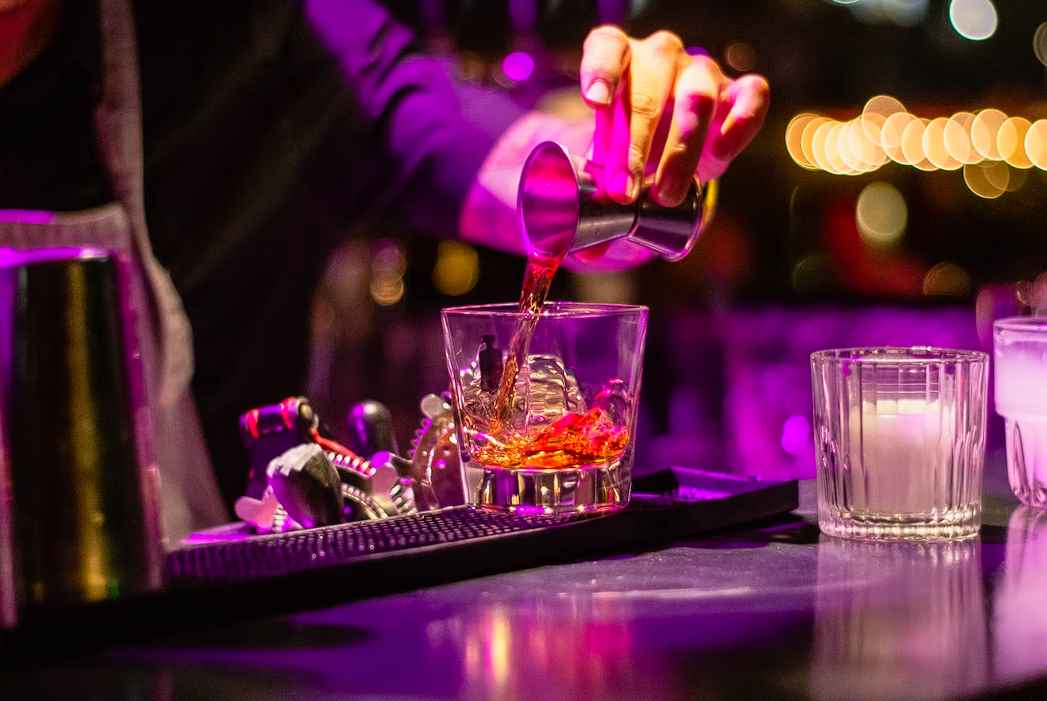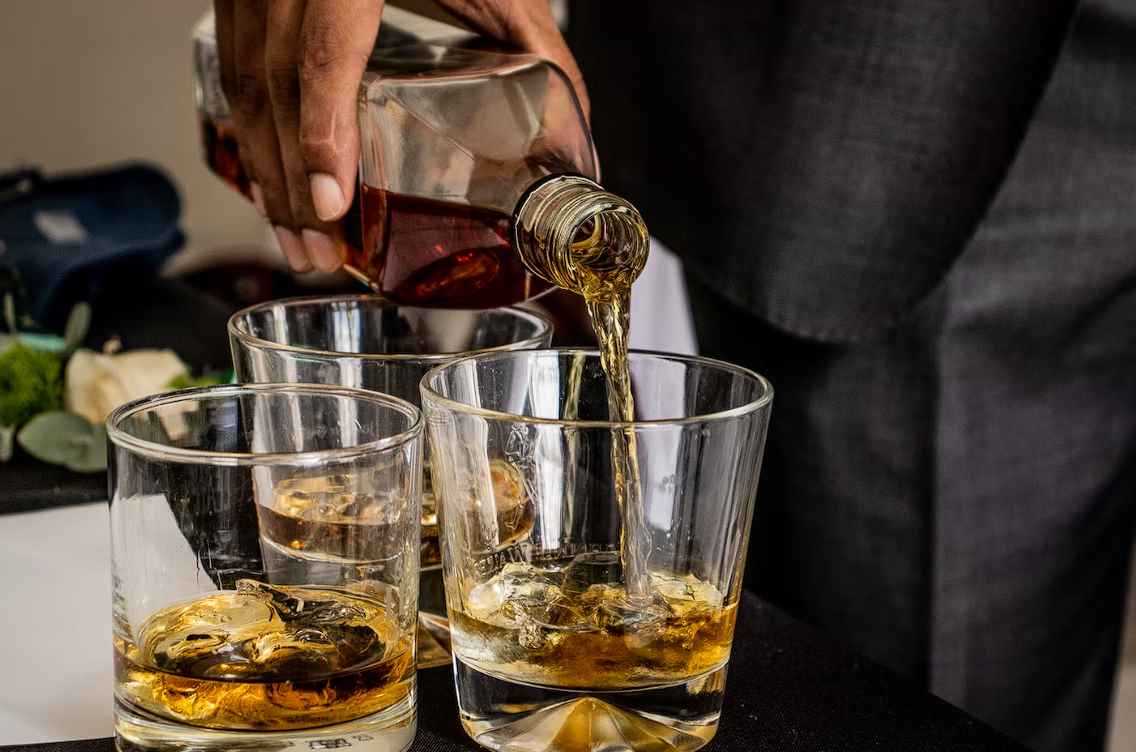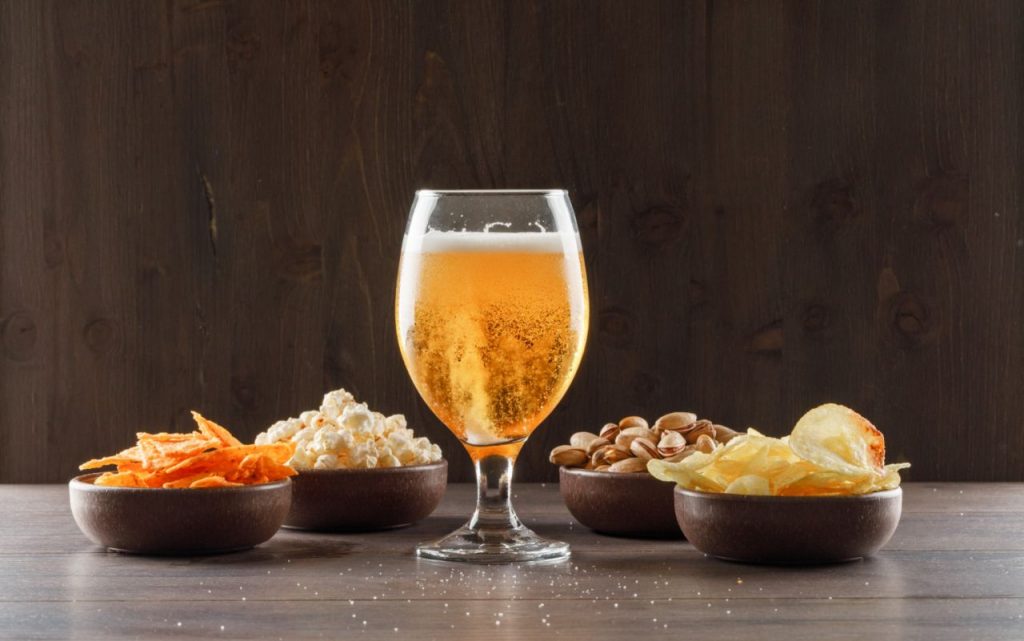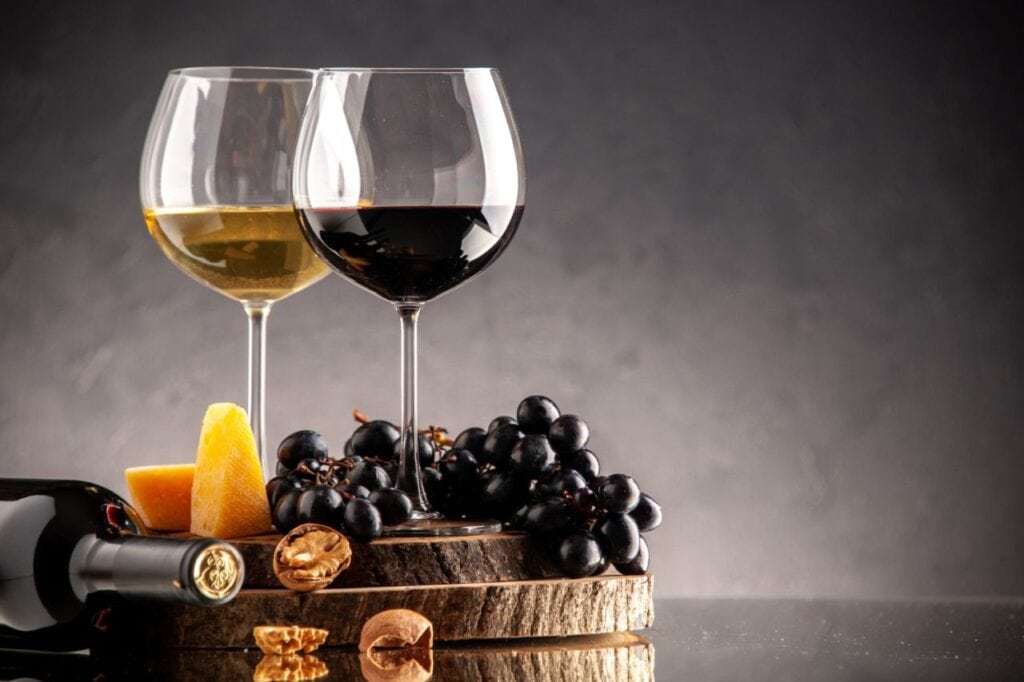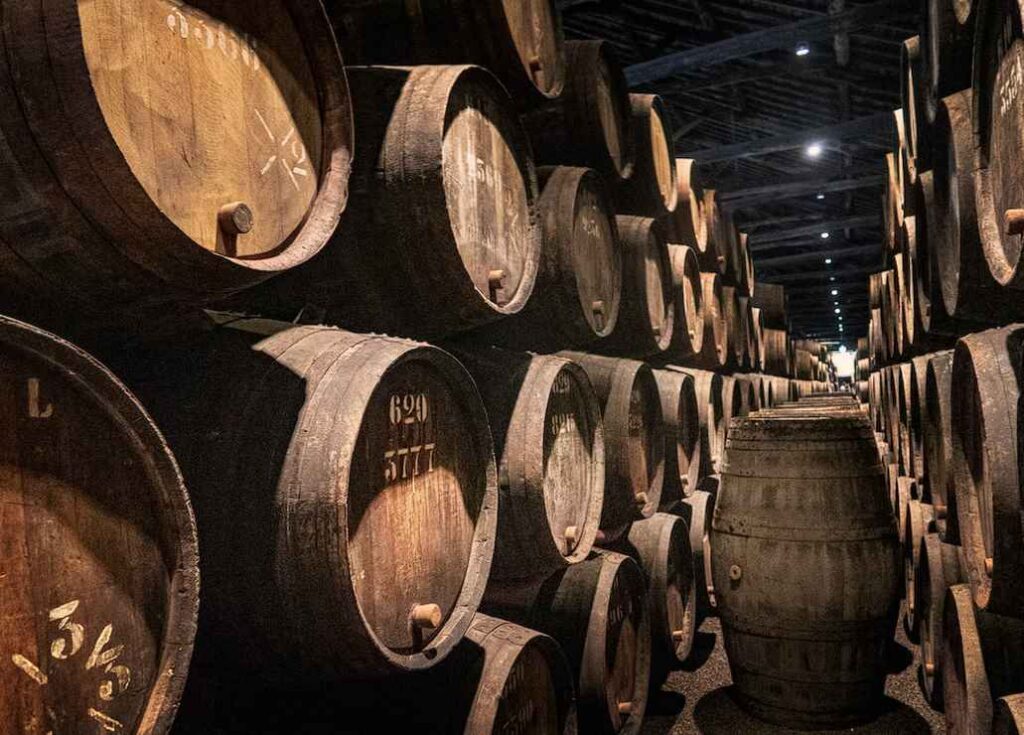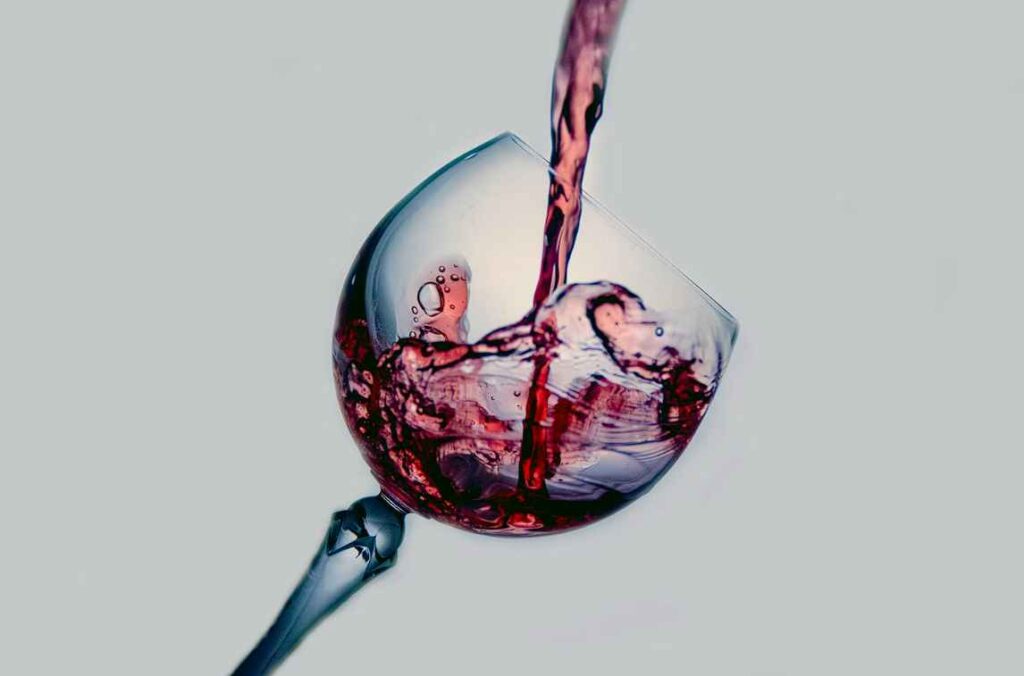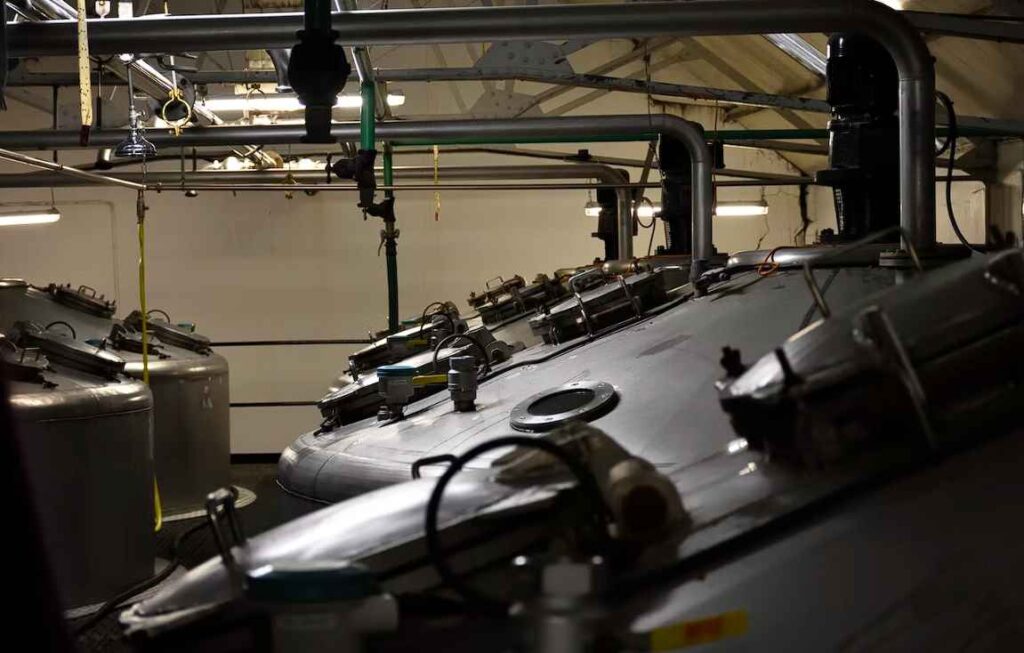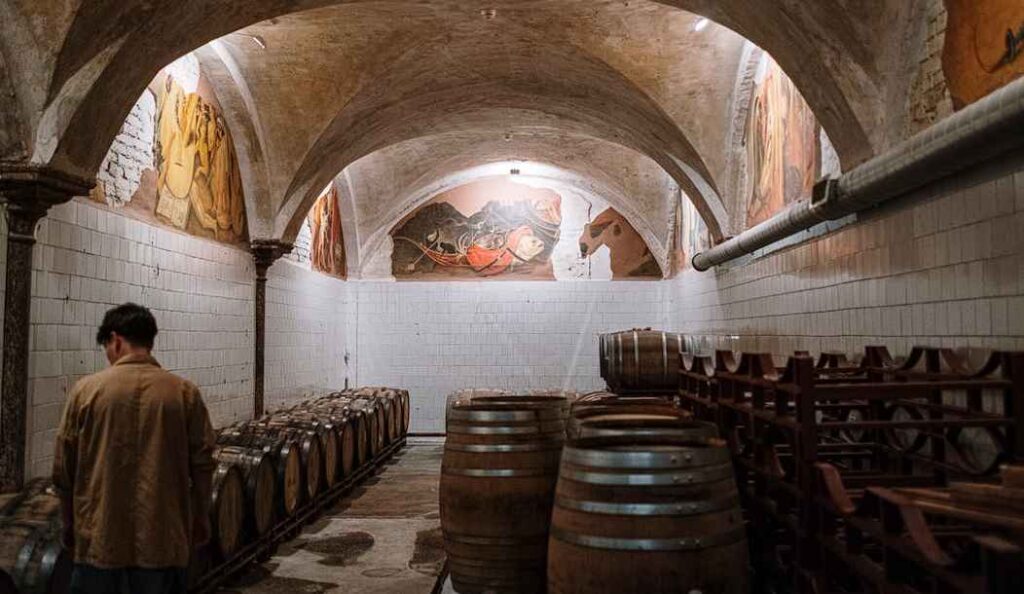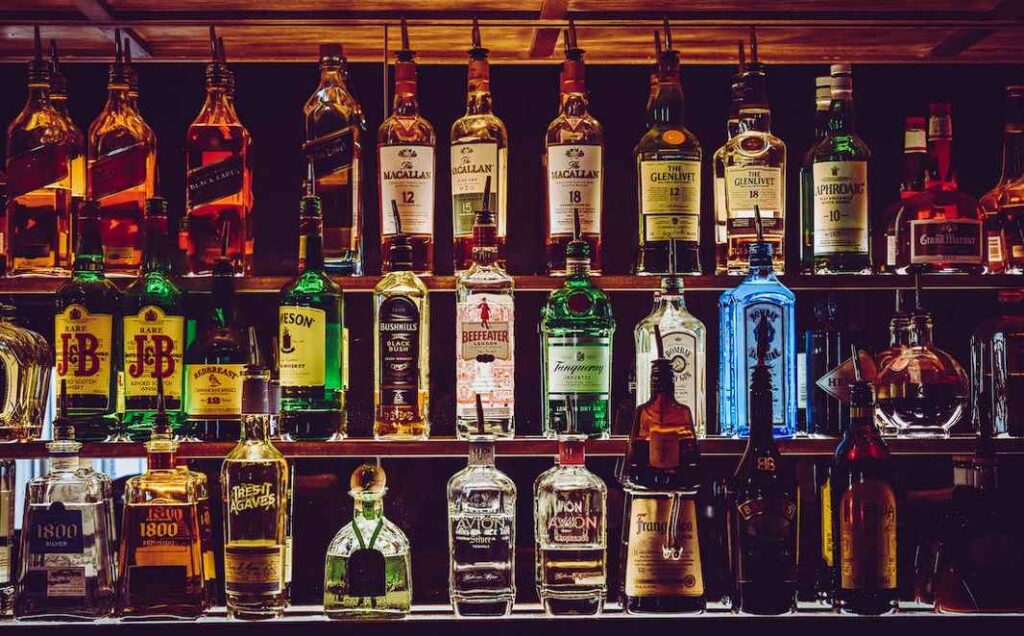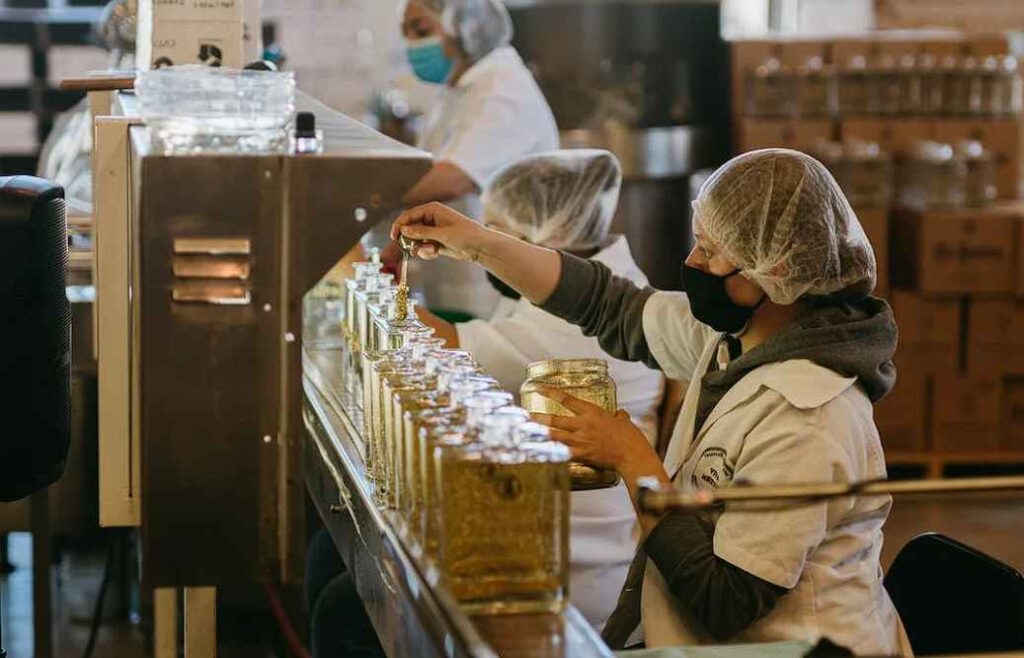Are you debating whether you want a gin or whiskey for your next cocktail? Both drinks are popular spirits, but do you know what differentiates them?
This blog post is here to help settle the debate and provide more insight into these beloved beverages. We'll cover their ingredients, production processes, flavour profiles, and more.
Whether you're new to alcohol or an experienced brewer looking to brush up on their knowledge of these two libations—you won't want to miss this!
Looking to discover and explore unique craft beer and spirits? Let us introduce you to Tar Barrel Mornington Brewery & Distillery – where traditional brewing techniques meet modern technology, offering an experience like no other.
Discerning Factors of Gin and Whiskey
Whiskey is created by distilling fermented barley mash. Depending on the region or type of whisky being made, wheat, barley, rye, or corn can all be used in the distillation process.
Charred barrels are a common way to age them. Juniper berries are the primary ingredient in making gin, a spirit. Gin is a distilled liquor with juniper berry extracts added to it for flavour. Spirit can be distilled from any fermented grain material, including barley, rye, or other grains.
There are several varieties of whiskey, each with its distinct flavour, alcohol concentration, and even base ingredient. Grain whisky and malt whisky are the two most common kinds. On the other hand, grain can be created from any grain, but malt whisky relies on malted barley as its primary ingredient. In malting, the grain is germinated to begin the brewing process.
Barley needs to be soaked for a specific period and frequently turned to achieve even soaking and germination. Whiskies can be broken down even further into:
- A single malt whisky consists of a single distiller and is produced from a mash containing only one malted grain.
- Malt whiskies from multiple distilleries are combined to make blended malt whisky.
- A blended whisky is a whisky that contains a combination of malt and grain whiskies, neutral spirits, caramelised, and flavouring.
- Whiskies labelled as "cask strength" have either not been watered down or have only a tiny amount of water added to them before bottling. In other words, these whiskies are rare.
- You can tell a single cask of whiskey by its cask number, which is printed on each bottle.
Whiskies need to age in barrels to mellow and gain strength. Unlike wine, whiskey does not improve with age in the bottle, so hoarding a bottle won't make it tastier or more potent. Different regions have different requirements for alcohol and mash content.
Charring the wood barrels gives the whiskies their distinctive brown and caramel colours. Depending on the rules, the alcohol can have other flavours and colours added to it.
Comparing Whiskey and Gin
Significant differences exist between the sources and ingredients used to make whiskey and gin. In addition, the methods used to make and age these two alcoholic beverages are distinctive.
Whiskey, like vodka, is a distilled liquor often distilled from corn, rye, wheat, or barley, but these ingredients might vary by region. On the other hand, gin is an alcoholic beverage produced by distilling fermented barley mash, the main ingredient being juniper berries.
The Manufacturing and Distilling Procedure
Distillation can happen anywhere from once to twice for gin, depending on the producer. Instead, whiskey undergoes multiple distillation processes. The distillation process removes impurities and increases the alcohol content of the liquid.
Various techniques, including vapour infusion, steeping, and vacuum distillation, could produce alcoholic beverages. While vodka is typically distilled in a continuous still, whiskey is traditionally distilled in a copper pot still.
Progress of Ageing
Whiskeys have a particular flavour and colour because they are aged in charred oak barrels, while gin gets its flavour from juniper berries. The cask strength and ageing in oak barrels distinguish single malt whiskey from other types of whiskey.
When made with natural botanicals for scent and flavour, neutral spirits like gin, on the other hand, can be consumed immediately.
Fundamental Goods
All whiskeys start with various ingredients; however, there are certain common ones. While malt whiskey is mainly prepared using malted grain (barley), grain whiskey can be produced from any grain (corn, rye, and wheat).
In contrast, gin starts as a grain spirit (often barley or wheat) and gets its distinctive taste from juniper berries added during the second distillation process.
Drink Mixers & Spirits
You can go right with either of these spirits when making cocktails. However, gin is used in various cocktails and other dishes. Whiskey goes well with various mixers and is often enjoyed neat or on the rocks, much like wines, rum, and scotch.
Gin has a smooth flavour that pairs well with various mixers, including flavoured vodkas. Try your hand at the Clover Club, Bramble, or Tom Collins, well-known gin-based cocktails.
Colour
Gin, like vodka, is clear, while whiskey has a distinct hue from ageing in charred barrels. While charred oak or bourbon barrels age whiskeys to perfection, gin is bottled as soon as it is made.
Distinct Varieties of Gin
Gins made from fermented grain mash and flavoured with juniper are the oldest distilled spirit drink. They are redistilled using aromatic ingredients and have an ABV of around 68%.
These are juniper-flavoured like gin, except the juniper flavour is added after distillation rather than during. Before it may be labelled as gin, it must taste mostly of juniper.
Gin that has been distilled does have an early strength of 95% ABV and is produced by repeatedly distilling ethyl alcohol that comes from agricultural sources. Natural botanicals like juniper berries are used in the mix as well.
Though they share a common ingredient in the grain mash used to distil them, whiskey and gin have quite different age requirements. Whisky is kept in charred oak barrels that impart a distinctive colour and flavour after distillation, while gin is flavoured with juniper fruit to impart a distinctive scent and taste.
Variety of Gins
Spirits with a Juniper Flavour
Gins of this type date back to the first attempts to distil fermented grain mash.
The alcohol content is increased to around 68% before they are redistilled with aromatic chemicals.
Gin
These are also juniper-flavoured, but the juniper flavour is added after distillation rather than during the process.
If it's going to be labelled as gin, juniper ought to be the dominant flavour.
Pure alcohol gin
Gin is manufactured by repeatedly distilling 95% ABV ethyl alcohol derived from agricultural sources. Additionally, various natural herbs, including juniper berries, are incorporated.
The maturing process distinguishes whisky from gin, even though both start with a grain mash. Once distilled, whisky is aged in burnt oak barrels to develop its characteristic taste and colour, whereas juniper berries are used to flavour gin to develop its characteristic scent and taste.
The Process of Distillation: Origin of the Liquors We Enjoy
So, to recap what we know, all alcoholic beverages with a high proof level are distilled. To what extent does the process of distillation need pretreatment? Distillation and the components of the mash bill are the first steps in creating distinctive varieties of hard alcohols. Both types of liquor utilise the following sources of carbohydrates:
Whiskey
Malted corn, rye, wheat, or barley Mash bill requirements vary by style of whisky (bourbon, rye, Scotch, Irish whisky, etc.) and are strictly enforced in most countries (Canada being an exception).
Gin
For gin, you may use any grain (depending on where you get it), but the most common ones are maize, wheat, barley, and rye.
Conclusion
Gin and whisky are both popular alcoholic beverages, but are you familiar with their differences? This article hopes to end the controversy and shed light on these fascinating drinks by providing additional information about them.
Distilled liquor flavoured with juniper berry extracts is known as gin, while whisky is made from distilling fermented barley mash. Whiskey comes in a wide range of styles, each with its own signature aroma, alcoholic punch, and foundational spirit. Unlike blended whisky, which is a mixture of malt and grain whiskies, neutral spirits, caramelised sugar, and flavouring, single malt whisky is manufactured by a single distiller using only one type of malted grain in the mash.
There is a cask number printed on each bottle of "cask strength" whisky so that you know exactly which whisky came from which barrel.
The ingredients and production processes behind whisky and gin are distinctive. Gin is made by distilling fermented barley mash, while whisky is typically distilled from corn, rye, wheat, or barley.
Gin is typically distilled once, but can go through as many as two distillations. When a liquid is distilled, the alcohol content rises and the impurities sink. Ageing whisky in charred oak barrels imparts a distinctive flavour and amber hue, while juniper berries give gin its distinctive aroma and taste.
Single malt whisky is distinguished from other whiskies by its cask strength and ageing in wood barrels. Whiskey, like wine, rum, and scotch, can be sipped neat or on the rocks, but it also mixes well with other beverages. Gin is versatile and may be used in many different drinks and recipes because of its pleasant taste.
Gins, the world's first distilled spirit beverage, with an alcohol by volume (ABV) of about 68%. Like gin, they have a juniper flavour, although the juniper flavour is added after distillation. Gin is made by continually distilling ethyl alcohol derived from agricultural sources, and its initial strength is 95% ABV.
Whiskey is aged in charred oak barrels while gin is flavoured with juniper fruit to give it a unique aroma and flavour, therefore the two beverages are aged differently. Both types of liquor use the carbohydrates glucose, fructose, and lactose, and the initial steps in making various sorts of hard alcohols are distillation and the components of the mash bill.
Content Summary
- This article hopes to end the controversy and shed light on these fascinating drinks by providing additional information about them.
- We'll discuss what goes into them, how they're made, and what flavours you may expect.
- You won't want to miss this, whether you're a total sobriety rookie or a seasoned brewmaster just trying to brush up on your understanding of beer and wine.
- Distilling fermented barley mash results in whisky.
- Wheat, barley, rye, and corn are all acceptable grains for distilling whisky, though their prevalence in the process depends on the location and style of whisky being produced.
- Gin, a type of spirit, is mostly made from juniper berries.
- Gin is a type of distilled liquor that gets its distinctive flavour from juniper berry extracts.
- Barley, rye, or any other fermented grain can be used to make spirit.
- There are many different kinds of whisky, each with its own flavour profile, alcohol content, and even starting material.
- It's normal to find whisky made from either grains or malted barley.
- Malt whisky, on the other hand, is made almost exclusively from malted barley, while grain whisky can be made from any grain.
- To start making beer, malting is the process of letting the grain germinate.
- To ensure equal soaking and germination, barley must be tossed often while it is being soaked.
- Whiskies can be further subdivided into:
- One distillery handles the entire process of making single malt whisky from a mash of just one type of malted grain.
- Blended malt whisky is a type of whisky made by combining malt whiskies from different distilleries.
- Malt and grain whiskies, along with neutral spirits, caramelised sugar, and flavouring, are the building blocks of blended whisky.
- Whiskies that are labelled as "cask strength" have either not been watered down at all, or have had very little water added to them before bottling.
- Whiskies get their signature brown and caramel hues from being aged in charred wood barrels.
- The alcohol may be flavoured and coloured in accordance with the regulations.
- There is a big variation between the ingredients and origins of whisky and gin.
- These two alcoholic beverages are also made and aged in different ways.
- Whiskey, like vodka, is a distilled beverage; the grains used to make it vary by area. Common ones include corn, rye, wheat, and barley.
- Gin, on the other hand, is distilled from fermented barley mash and features juniper berries as its primary flavouring.
- Gin is typically distilled once, but can go through as many as two distillations.
- To achieve this, whisky is distilled several times.
- When a liquid is distilled, the alcohol content rises and the impurities sink.
- Alcoholic beverages can be made using a variety of methods, such as vapour infusion, steeping, and vacuum distillation.
- Whiskey is normally produced in a copper pot still, while vodka is typically distilled in a continuous still.
- Ageing whisky in charred oak barrels imparts a distinctive flavour and amber hue, while juniper berries give gin its distinctive aroma and taste.
- Single malt whisky is distinguished from other whiskies by its cask strength and ageing in wood barrels.
- Gin, on the other hand, is a neutral spirit that may be sipped immediately after being produced using natural botanicals for aroma and flavour.
- There are many different ingredients that go into making whisky, but there are also several staples that are used in all of them.
- Grain whisky can be made from any type of grain, although malt whisky is often made using malted grain (barley) (corn, rye, and wheat).
- Gin, on the other hand, begins as a grain spirit (often barley or wheat) and acquires its signature flavour from juniper berries added during the second distillation process.
- When mixing drinks, either of these liquors is a good choice.
- Gin, however, is a popular ingredient in many different drinks and foods.
- The earliest distilled liquor is gin, which is manufactured from fermented grain mash and flavoured with juniper.
- They have an alcohol by volume (ABV) of about 68% and are redistilled utilising fragrant additives.
- Like gin, these have a juniper flavour, but the juniper flavour is added after distillation.
- There must be a predominance of juniper flavour in the spirit before it can be called gin.
- Gin is made by continually distilling ethyl alcohol derived from agricultural sources, and its initial strength is 95% ABV.
- Ingredients like juniper berries, a natural botanical, are added for extra flavour.
- Gin and whisky both start with grain mash in the distillation process, but the minimum age at which each can be consumed is very different.
- After distillation, whisky is aged in charred oak barrels, which adds colour and flavour; gin is flavoured with juniper fruit, which contributes aroma and flavour.
- Spirits flavoured with juniper are called Gin, and there are many different kinds.
- This style of gin can be traced back to the earliest attempts to distil fermented grain mash.
- Before being redistilled using aromatic compounds, the alcohol concentration is raised to roughly 68%.
- These are flavoured with juniper as well, however the juniper flavour is added after distillation.
- A gin should taste primarily of juniper to be called gin.
- Gin is made by distilling ethyl alcohol taken from agricultural sources multiple times until it reaches 95% ABV.
- Natural plants, such as juniper berries, are used as well.
- While both whisky and gin begin with a grain mash, the maturation process is what sets them apart.
- Whisky is aged in charred oak barrels to give it its distinctive flavour and colour after distillation, while gin is flavoured with juniper berries to give it its signature aroma and flavour.
- So, to review, the distillation process is used to create all alcoholic beverages with a high proof.
Frequently Asked Questions
Gin usually has an alcohol content of 40% to 50%, while whiskey typically has an alcohol content of 40% to 60%.
Gin is made by distilling neutral spirits with botanicals, and the distillation process may vary depending on the brand and style. Whiskey, on the other hand, is made by fermenting grains and then distilling the liquid, which is then aged in wooden barrels.
Gin has a crisp, refreshing taste with hints of juniper and other botanicals. Whiskey, on the other hand, has a smooth and robust taste that can vary greatly depending on the type of grain used and the ageing process.
Yes, gin is often mixed with tonic water to make a gin and tonic, while whiskey is often mixed with other ingredients like cola, ginger ale, or lemon juice to make cocktails.
Gin can be classified into different styles such as London Dry Gin, Plymouth Gin, and Old Tom Gin. Whiskey can be classified into different types such as bourbon, scotch, Irish whiskey, and rye whiskey.

